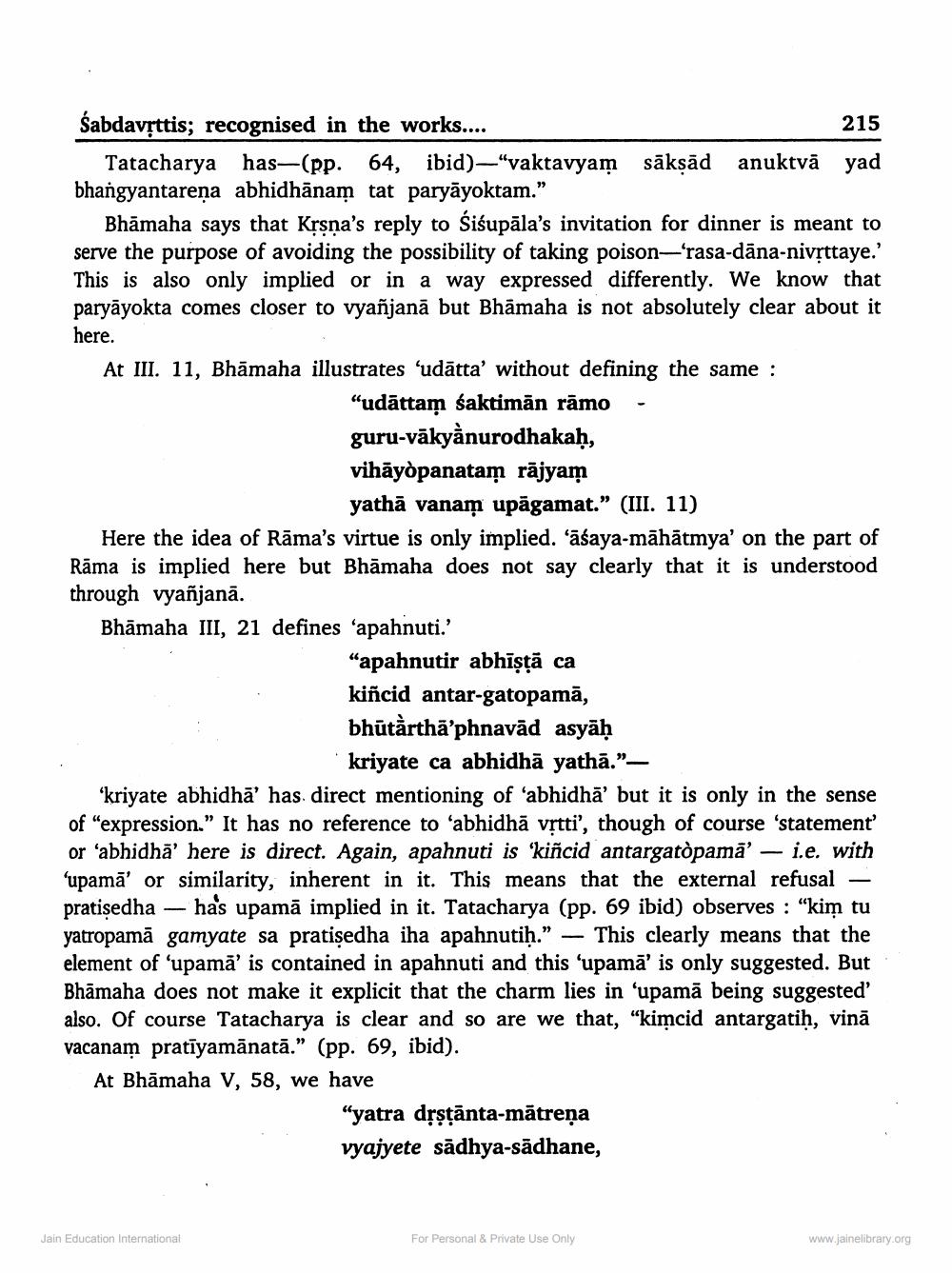________________
Sabdavịttis; recognised in the works....
215 Tatacharya has—(pp. 64, ibid)—“vaktavyam sākṣād anuktvā yad bhangyantarena abhidhānam tat paryāyoktam."
Bhāmaha says that Krsna's reply to Siśupāla's invitation for dinner is meant to serve the purpose of avoiding the possibility of taking poison-rasa-dana-nivṛttaye.' This is also only implied or in a way expressed differently. We know that paryāyokta comes closer to vyañjanā but Bhāmaha is not absolutely clear about it here. At III. 11, Bhāmaha illustrates 'udātta' without defining the same :
"udāttam saktimān rāmo - guru-vākyànurodhakaḥ, vihāyòpanatam rājyam
yathā vanam upāgamat." (III. 11) Here the idea of Rāma's virtue is only implied. 'āśaya-māhātmya' on the part of Rāma is implied here but Bhāmaha does not say clearly that it is understood through vyañjanā. Bhāmaha III, 21 defines 'apahnuti.'
"apahnutir abhīșță ca kiñcid antar-gatopamā, bhūtàrthā'phnavād asyāḥ
kriyate ca abhidhā yathā.”‘kriyate abhidha' has direct mentioning of 'abhidhā' but it is only in the sense of "expression." It has no reference to 'abhidhā vrtti', though of course 'statement' or 'abhidhā' here is direct. Again, apahnuti is 'kiñcid antargatopamā' — i.e. with ‘upamā' or similarity, inherent in it. This means that the external refusal – pratisedha — has upamā implied in it. Tatacharya (pp. 69 ibid) observes : "kim tu yatropamā gamyate sa pratisedha iha apahnutih." - This clearly means that the element of 'upamā' is contained in apahnuti and this ‘upamā' is only suggested. But Bhāmaha does not make it explicit that the charm lies in 'upamā being suggested' also. Of course Tatacharya is clear and so are we that, "kimcid antargatih, vinā vacanam pratīyamānatā." (pp. 69, ibid). At Bhāmaha V, 58, we have
"yatra drstānta-mātreņa vyajyete sādhya-sādhane,
Jain Education International
For Personal & Private Use Only
www.jainelibrary.org




